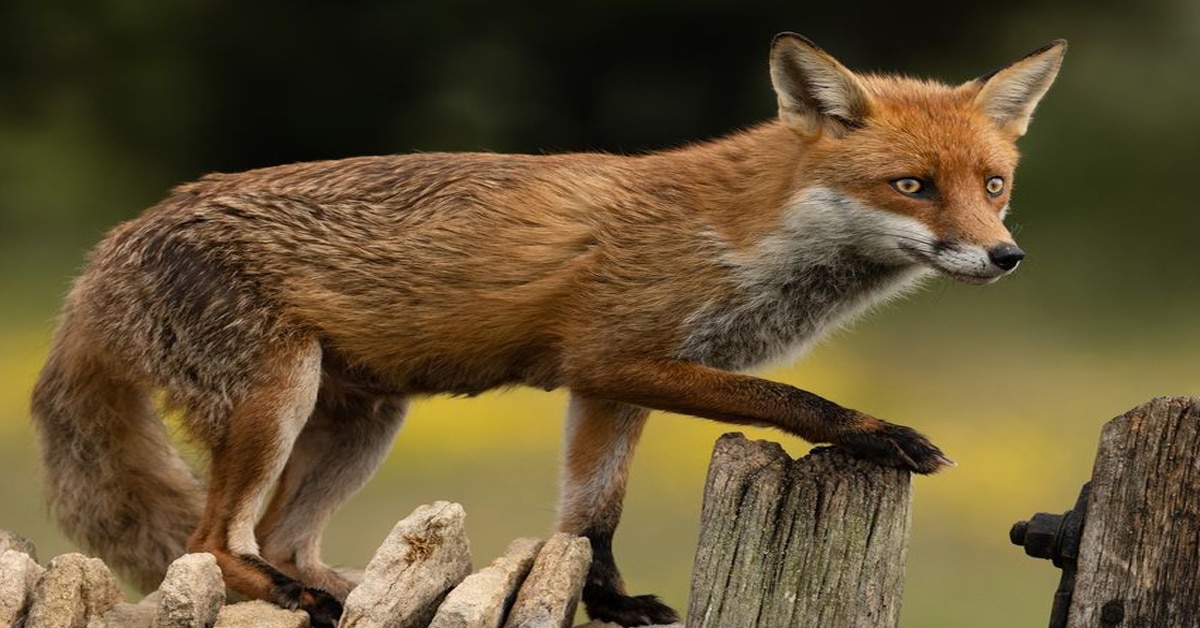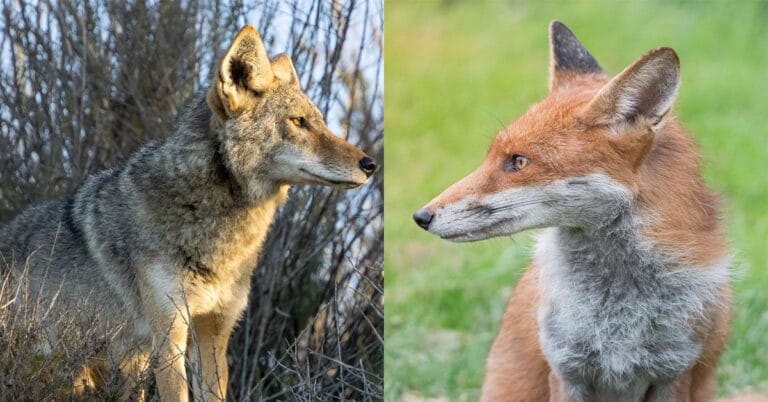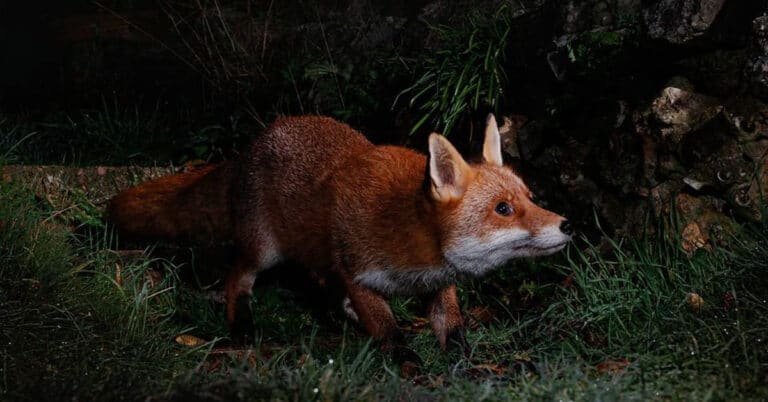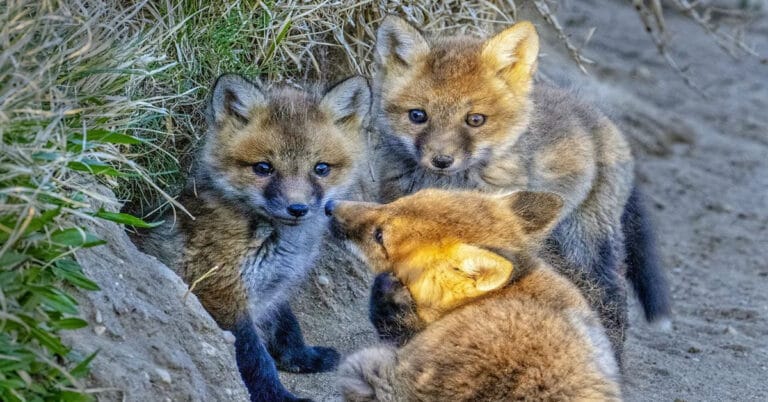Types of Foxes: All About Their Different Species
Foxes are gorgeous creatures and stand out from all other animals with their unique behavioral and visual characteristics. They are extremely adaptable and can survive in an unimaginably harsh living environment too. Foxes have managed to adapt to urban lifestyles and have no problem living close to people.
All types of foxes have their own unique traits. However, they have some general characteristics such as smartness and cleverness as long as they have awe-sparingly developed hearing, visual, and olfactory senses. Their unique traits make them exceptionally good hunters and a significant part of the ecosystem.

Biology Of Foxes
In order to explore the specific types of foxes, let’s first do a general overview of these amazing animals. Foxes are small to medium-sized mammals that are mostly the size of an adult cat. Foxes belong to the Canidae family. They are omnivorous eaters, meaning that they eat everything, starting with vegetation and ending with meat.
Visual characteristics mainly vary depending on the types of foxes. However, some things can be common. For example, all foxes have a bushy tail and a pointy nose, with a snout that is pointed up. Also, the triangular ears are very noticeable in all types of foxes. Foxes can be found everywhere all around the world. They can even live in a deserted environment or extremely cold, icy areas.
Types of Foxes
There are 23 species of foxes identified all around the world. They are divided into six genres. “Real foxes” is a group of the genus Vulpes that includes twelve species. The second-largest genus was the Lycalopex genus, which contains 6 species in total.
They are occasionally referred to as foxes. They are either members of the paraphyletic group of South American foxes or belong to the group that includes the Bat-eared fox, Gray fox, and Island fox.
In this article, we will discuss and overview the characteristics of the types of foxes that fall into the “real foxes” genre.
Red Fox
The red fox is the biggest of all fox genera. This type of fox is one of the most extensively dispersed members of the order Carnivora. The main habitats of the red fox are in North America, Europe, and Asia, as well as parts of North Africa.
Those types of foxes are the least concerned, according to the IUCN. There are 45 subspecies of red fox in total. They are divided into two main categories. Northern foxes, which are larger, and Basal foxes, which are gray in color. Its distribution has expanded in tandem with human growth.
The red foxes also managed to reach Australia. However, they are considered to be harmful to birds and small mammals there. Some even consider them to be one of the most invasive animals in Australia.
In contrast to other types of foxes, red foxes tend to be more carnivorous. The main difference that they have is their size. They are bigger in comparison to others. They mainly feed on rodents and mammals such as rabbits, squirrels, reptiles, invertebrates, and little birds.
Bengal Fox
Bengal foxes are also referred to as Indian foxes. They are endemic to the Indian subcontinent and can be found in the Himalayan foothills, Nepal, India, Pakistan, and Bangladesh. Their silver-gray color creates a grizzled effect. The main diet includes soft-furred rats, Indian Gerbils, Indian Mynas, Patridge, neem, mango, ber, and jambu.
Arctic Fox
The Arctic fox is sometimes also referred to as the white fox, polar fox, or snow fox. It is smaller in size in comparison to other fox types. The Arctic fox is mainly habituated in the Northern Hemisphere’s Arctic regions and is widespread across the Arctic tundra biome. It can survive in extremely cold weather conditions.
This type of fox has a long and fluffy tail. It has a distinctive character and a rounder body. It helps them not to expose the large area of the body to the outer environment and prevent heat loss. Arctic foxes mainly eat lemmings, voles, fish, seabirds, and ringed seals. They will also not have a problem eating the carrion and the vegetation that they find.
Fennec Fox
The fennec’s biological name is Vulpes zerda. They are crepuscular foxes found in the North African deserts stretching from Western Sahara to the Sinai Peninsula. They are the tiniest types of foxes. The most distinguishing characteristic is its extraordinarily wide and pointy ears, which, first of all, help in heat dispersion in extremely hot weather. Another thing is that their uniquely developed hearing helps them even hear the potential food underground.
Its appearance and visual characteristics have adapted to the desert’s harsh temperatures. The kidney function is especially suitable for an environment where water is scarce. Fennec foxes consume insects, small animals, and birds.
Pale Fox
The pale fox is a type of fox found mainly in the African Sahel region, stretching from Senegal in the west to Sudan in the east. It is one of the least researched canid species, and therefore there is not a lot of information about them. They have no contact with humans, unlike other types of foxes. The reason is mainly the distant habitat and sandy coat, which mix in well with the desert-like landscape.
The pale fox is small in size and has short legs like other species, but it also comes with a narrow muzzle. The fur is not thick. Those foxes have long whiskers and dark rings around their eyes. Because they are also desert animals like fennec foxes, they have large ears similar to them. Their main food sources are rodents, reptiles, insects, plants, and berries. They retain water mainly from food.
Kit Fox
The kit fox is a species of fox that lives in arid and semi-arid parts of the southwestern United States and Mexico. These types of foxes are the smallest of the four Vulpes species found in North America, and they are one of the tiniest vulpines on the planet. Like the fennec fox and pale fox, they have huge ears too.
Just like all types of foxes, kit foxes are carnivores mainly. However, they also eat vegetables when there is no other way. Mainly they eat Merriam’s kangaroo rat, lagomorphs, rodents, and insects. They eat tomatoes and cactus fruit as the source of water.
Blanford’s Fox
The Blandford’s fox is a small fox whose habitat is the Middle East and Central Asia. Those foxes have bushy tails that can be as long as their bodies. They are carnivores like other types of foxes and are mainly insectivorous and frugivorous. Other than meat, they also enjoy eating caper bushes, melons, olives, and even grapes.
Cape Fox
Cape foxes are also called asse, coma fox, and silver-backed fox. They are mainly found in Southern Africa. They have similar traits to the Fennec foxes, mainly because of the same living environment. However, Cape foxes are larger in body size. The diet of Cape foxes is similar to that of all other types of foxes. They mainly eat small mammals, insects, birds, reptiles, fruit, and carrion. They are known for their attacks on livestock.
Corsac Fox
Corsac foxes are medium-sized types of foxes and are also known as Steppe foxes. The habitats of those animals are the semi-desert, steppes, and deserts of Central Asia. They are also found in Mongolia and China. Corsacs have yellowish-colored fur and pale underparts.
They also have pale colors on their mouths, throats, and chins. In the winter, their fur gets thick, and in the summer, it sheds and the fur is thin. Corsacs enjoy food such as insects, rodents, voles, jerboas, gerbils, hamsters, and ground squirrels. Also, they are often seen eating hares and pikas.
Tibetan Sand Fox
The Tibetan fox is also known as the Tibetan sand fox. Their main habitats are the Tibetan Plateau, Nepal, China, Sikkim, and Bhutan. These types of foxes are found at elevations as high as 17,400 feet above sea level. They have soft and dense coats, narrow muzzles, and short ears. They mainly feed on Plateau pikas, wooly hares, marmots, and carcasses of all kinds of dead animals. Unlike other types of foxes, the Tibetian fox is a daytime hunter.
Swift Fox
A Swift fox is a small fox that has an orangish color and is the size of a domestic cat. They have noticeably large ears and black patches on their muzzle. Their main habitats are mainly short-grass prairies and deserts. Swift foxes are found from North America all the way to Canada. The diets of those types of foxes include beetles, grasshoppers, lizards, ground squirrels, and rabbits. They mainly eat seasonal foods.
Rüppell’s Fox
Rüppell’s sand foxes are native to the deserts and semi-deserts of North America, Western Asia, and the Middle East. They are named “Rüppell’s” after the German naturalist Eduart Rüppell.
They are types of foxes that have small legs and are beige-colored. The color fades towards the legs. They have heavy fur to the pads and can survive in the extremely high temperatures of the desserts. Rüppell’s foxes eat the food that is locally available to them. The diet consists of beetles, orthopterans, and even succulents.
Bottom Line
Foxes are gorgeous creatures. Even though there are many different types of foxes, their general characteristics and habits can be similar. Foxes can have significant differences as a result of their living habitat. What unites them all is that they are awe-spiring creatures of nature.

Nato is a content writer and researcher with a background in psychology who’s eager to explore the wonders of nature. As a travel enthusiast and animal lover, she hopes to inspire others to discover and cherish the beauty and importance of the natural world.







